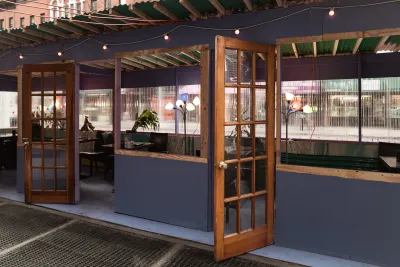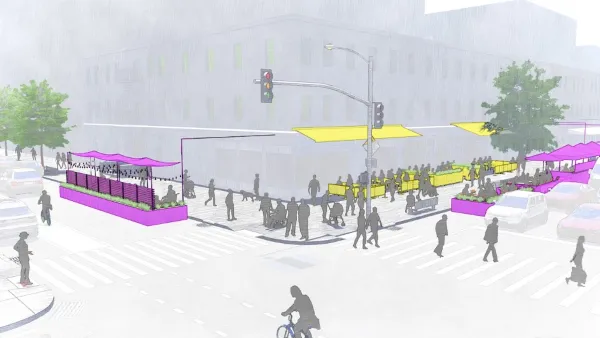Some restaurant owners worry the new requirements will make it too expensive to maintain outdoor dining structures.

Last Thursday, the New York City city council approved a bill permanently legalizing the outdoor dining structures that started dotting the city during the Covid-19 pandemic.
According to an article by Emma G. Fitzsimmons in The New York Times, “The bill aims to strike a balance by retaining a popular al fresco program while regulating it more closely, allowing for the clearing of abandoned or ugly dining sheds.” The bill also requires restaurants to take down the structures between November 30 and March 31, an addition that some restaurant owners say adds extra cost for dismantling and storage and reduces their ability to seat more customers during winter.
Under the bill, expected to be signed by Mayor Eric Adams, “the city’s Transportation Department would set basic design guidelines that have yet to be determined. Restaurants could offer outdoor dining from 10 a.m. until midnight and would be required to pay fees based on their location and square footage, with higher fees in Manhattan south of 125th Street.”
Supporters of the bill, like Kate Slevin, executive vice president at the Regional Plan Association, say the bill is “not 100 percent perfect” but provides a reasonable compromise. Others point out that the added expenses could exclude all but the most financially successful restaurants.
FULL STORY: New York City Is Poised to Make Outdoor Dining Permanent, With Caveats

National Parks Layoffs Will Cause Communities to Lose Billions
Thousands of essential park workers were laid off this week, just before the busy spring break season.

Retro-silient?: America’s First “Eco-burb,” The Woodlands Turns 50
A master-planned community north of Houston offers lessons on green infrastructure and resilient design, but falls short of its founder’s lofty affordability and walkability goals.

Delivering for America Plan Will Downgrade Mail Service in at Least 49.5 Percent of Zip Codes
Republican and Democrat lawmakers criticize the plan for its disproportionate negative impact on rural communities.

Test News Post 1
This is a summary

Test News Headline 46
Test for the image on the front page.

Balancing Bombs and Butterflies: How the National Guard Protects a Rare Species
The National Guard at Fort Indiantown Gap uses GIS technology and land management strategies to balance military training with conservation efforts, ensuring the survival of the rare eastern regal fritillary butterfly.
Urban Design for Planners 1: Software Tools
This six-course series explores essential urban design concepts using open source software and equips planners with the tools they need to participate fully in the urban design process.
Planning for Universal Design
Learn the tools for implementing Universal Design in planning regulations.
EMC Planning Group, Inc.
Planetizen
Planetizen
Mpact (formerly Rail~Volution)
Great Falls Development Authority, Inc.
HUDs Office of Policy Development and Research
NYU Wagner Graduate School of Public Service





























